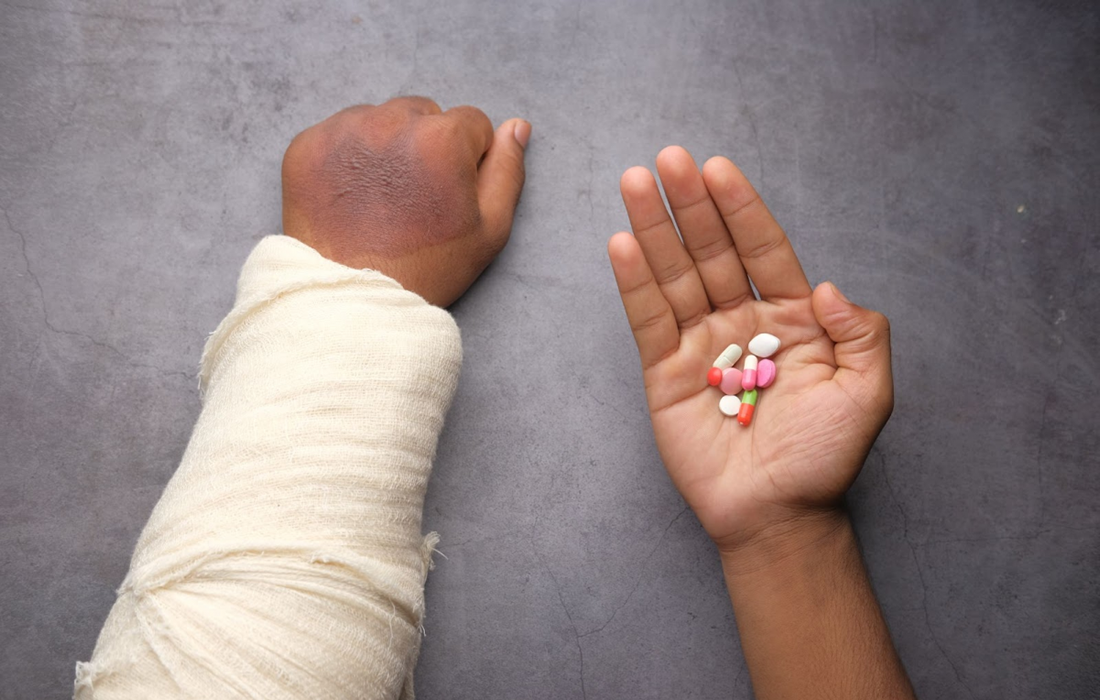Regenerative Medicine News and General Information
A Promising Wound Dressing That Can Reveal Infection
The skin is the largest organ of the human body. A wound disrupts the normal function of the skin and can take a long time to heal, be very painful for the patient and may, in a worst case scenario, lead to death if not treated correctly.
In traditional wound care, dressings are changed regularly, about every two days. To check whether the wound is infected, care staff have to lift the dressing and make an assessment based on appearance and tests. This is a painful procedure that disturbs wound healing as the scab breaks repeatedly.
Researchers at Linköping University, have now developed a wound dressing made of nanocellulose that can reveal early signs of infection without interfering with the healing process.
“Being able to see instantly whether a wound has become infected, without having to lift the dressing, opens up for a new type of wound care that can lead to more efficient care and improve life for patients with hard-to-heal wounds. It can also reduce unnecessary use of antibiotics,” says Daniel Aili, professor in the Division of Biophysics and Bioengineering at Linköping University.
Non-infected wounds have a pH value of about 5.5. When an infection occurs, the wound becomes increasingly basic and may have a pH value of 8, or even higher.
To make the wound dressing show the elevated pH value, the researchers used bromthymol blue, BTB, a dye that changes color from yellow to blue when the pH value exceeds 7. The result is a wound dressing that turns blue when there is an infection.
Daniel Aili and his colleagues at Örebro University are also developing anti-microbial substances based on so-called lipopeptides that kill off all types of bacteria.
“The use of antibiotics makes infections increasingly problematic, as multi-resistant bacteria are becoming more common. If we can combine the anti-microbial substance with the dressing, we minimize the risk of infection and reduce the overuse of antibiotics,” says Daniel Aili.
Sources:
Olof Eskilson, Elisa Zattarin, Linn Berglund, Kristiina Oksman, Kristina Hanna, Jonathan Rakar, Petter Sivlér, Mårten Skog, Ivana Rinklake, Rozalin Shamasha, Zeljana Sotra, Annika Starkenberg, Magnus Odén, Emanuel Wiman, Hazem Khalaf, Torbjörn Bengtsson, Johan P.E. Junker, Robert Selegård, Emma M. Björk, Daniel Aili. Nanocellulose composite wound dressings for real-time pH wound monitoring. Materials Today Bio, 2023; 19: 100574 DOI: 10.1016/j.mtbio.2023.100574
Emanuel Wiman, Elisa Zattarin, Daniel Aili, Torbjörn Bengtsson, Robert Selegård, Hazem Khalaf. Development of novel broad-spectrum antimicrobial lipopeptides derived from plantaricin NC8 β. Scientific Reports, 2023; 13 (1) DOI: 10.1038/s41598-023-31185-8
Linköping University. “The wound dressing that can reveal infection: Nanocellulose composite wound dressings for real-time pH wound monitoring.” ScienceDaily. ScienceDaily, 18 April 2023. <www.sciencedaily.com/releases/2023/04/230418195427.htm>.
Images from:
Photo by Towfiqu Barbhuiya
https://unsplash.com/photos/YgONpSF3Q28

